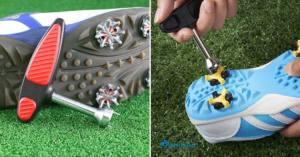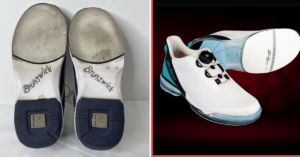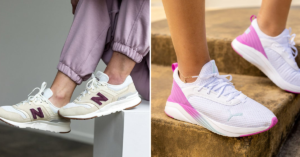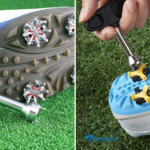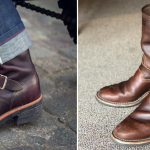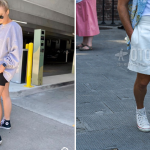Are you new to running and feeling overwhelmed by the countless options for running shoes? Don’t worry, you’re not alone! Choosing the right running shoe is crucial for comfort, performance, and injury prevention. This comprehensive guide will help you learn how to choose a running shoe for beginners, covering everything you need to know to find the perfect pair.
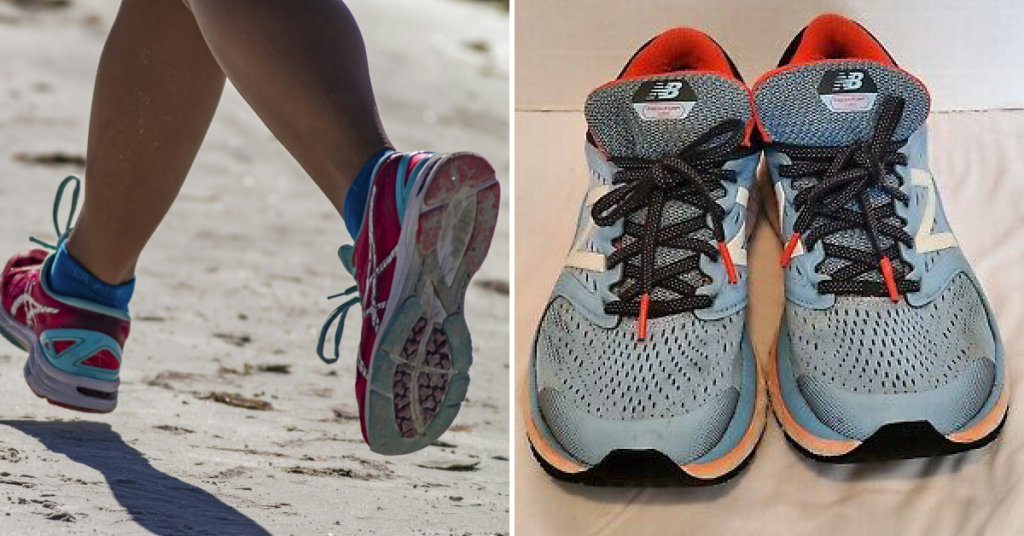
Importance of Proper Running Shoes
Before we dive into the specifics, let’s talk about why having the right running shoes matters. As a beginner, you might be tempted to use any old pair of sneakers you have lying around. However, running shoes are specifically designed to support your feet during the repetitive motion of running, which puts a lot of stress on your feet, ankles, knees, and hips. Proper running shoes can:
- Reduce the risk of injuries
- Improve your running form
- Enhance comfort during runs
- Boost your overall performance
Now that you understand the importance, let’s explore how to choose the right pair for you.
Know Your Foot Type
The first step in selecting the right running shoe is understanding your foot type. There are three main foot types:
- Neutral Arch: If you have a neutral arch, you’ll see a distinct curve along the inside of your foot, with about half of your arch touching the ground.
- Low Arch (Flat Feet): People with low arches or flat feet have little to no curve along the inside of their foot, with most of the foot touching the ground.
- High Arch: If you have a high arch, you’ll notice a very pronounced curve along the inside of your foot, with very little of the arch touching the ground.
Determine Your Foot Type:
- Wet your feet
- Step onto a piece of dark paper or a flat surface
- Step off and observe the footprint
If you see most of your foot, you likely have low arches. If you see a distinct curve connecting the heel and ball of your foot, you probably have a neutral arch. If you see only a thin line connecting the heel and ball of your foot, you likely have high arches. Understanding your foot type is crucial because it affects how your foot moves when you run, which in turn influences the type of shoe that will work best for you.
Gait Analysis: Understanding Pronation
Pronation refers to the natural inward roll of your foot as it strikes the ground. Understanding your pronation type can help you choose shoes that provide the right kind of support. There are three types of pronation:
- Neutral Pronation: Your foot rolls inward slightly, absorbing shock efficiently. This is considered the ideal foot motion.
- Overpronation: Your foot rolls inward excessively, which can lead to stability issues and potential injuries.
- Underpronation (Supination): Your foot doesn’t roll inward enough, which can result in inadequate shock absorption.
Determine Your Pronation Type:
- Look at the wear pattern on your old shoes. If the wear is even across the bottom, you likely have neutral pronation. If the inside of the sole is more worn, you might overpronate. If the outside edge is more worn, you might underpronate.
- Visit a specialty running store for a professional gait analysis. Many stores offer this service for free.
- Use the “wet test” described earlier. A neutral foot will leave an imprint with a distinct curve along the inside. An overpronated foot will leave a nearly complete imprint, while an underpronated foot will leave a very curved imprint with a thin line connecting the heel and ball of the foot.
Understanding your pronation type will help you choose shoes with the right level of stability and support.
Types of Running Shoes
Now that you understand your foot type and pronation, let’s look at the main types of running shoes:
- Neutral Shoes: These are best for runners with neutral pronation or slight underpronation. They provide cushioning and some shock absorption but no extra stability features.
- Stability Shoes: These shoes are designed for runners who overpronate slightly to moderately. They have features to prevent excessive inward rolling of the foot.
- Motion Control Shoes: These provide maximum stability for severe overpronators or heavier runners who need more support.
- Minimalist Shoes: These shoes have minimal cushioning and are designed to mimic barefoot running. They’re not typically recommended for beginners.As a beginner, unless you have severe overpronation or other specific foot issues, you’ll likely do well with either neutral or stability shoes.
Cushioning and Support
The amount of cushioning you need depends on various factors, including your body weight, running style, and personal preference. Here are some general guidelines:
- More cushioning: If you’re a heavier runner, run on hard surfaces like roads, or prefer a softer feel, you might prefer more cushioning.
- Less cushioning: If you’re a lighter runner, prefer a more “connected” feel with the ground, or run mostly on softer surfaces like trails, you might prefer less cushioning.
Remember, while cushioning can provide comfort, too much can interfere with your natural running form. As a beginner, a moderate amount of cushioning is usually a good starting point.
Fit and Comfort
No matter how technically suitable a shoe is for your foot type and running style, if it’s not comfortable, it’s not the right shoe for you. Here’s how to ensure a good fit:
- Size: Your running shoes should be about a half-size larger than your regular shoes. This allows for foot swelling during running and prevents your toes from hitting the front of the shoe.
- Width: The shoe should feel snug but not tight. There should be enough room in the toe box for you to wiggle your toes.
- Heel: Your heel should feel secure in the shoe, with no slipping when you walk or run.
- Try them on later in the day: Your feet naturally swell throughout the day, so trying on shoes in the afternoon or evening will give you a better idea of how they’ll fit during a run.
- Wear your running socks: Always try on running shoes with the socks you plan to run in.
- Test them out: Most running stores have a treadmill or allow you to jog around the store. Take advantage of this to see how the shoes feel in motion.
Key Features to Consider
When choosing running shoes, pay attention to these features:
- Breathability: Look for shoes with mesh or knit uppers that allow your feet to breathe.
- Weight: Lighter shoes can feel more comfortable for long distances, but they may sacrifice some cushioning or support.
- Flexibility: The shoe should bend where your foot naturally bends. For most people, this is at the ball of the foot.
- Durability: Look at the outsole (bottom of the shoe). It should be made of durable rubber, especially in high-wear areas.
- Heel-to-toe drop: This is the difference in height between the heel and toe of the shoe. A higher drop (8-12mm) is traditional and may be more comfortable for heel strikers, while a lower drop (0-4mm) promotes a more natural running form but requires stronger calf muscles.
Tips for Choosing and Using Your Running Shoes
- Don’t choose based on looks alone: While it’s nice to have good-looking shoes, prioritize fit and function over style.
- Replace your shoes regularly: Most running shoes last between 400-500 miles. Keep track of your mileage and replace them when they start to lose their cushioning.
- Rotate your shoes: If you run frequently, consider buying two pairs and alternating between them. This allows each pair to fully decompress between runs.
- Break them in gradually: Don’t go for a long run in brand new shoes. Wear them around the house first, then for short runs before using them for longer distances.
- Be open to change: As you develop as a runner, your needs may change. Don’t be afraid to try different types of shoes as you progress.
FAQs about Choosing a Running Shoe for Beginners
How much should I spend on running shoes as a beginner?
While good running shoes are an investment, you don’t need to break the bank. Expect to spend between $80-$150 for a quality pair of running shoes. Remember, the most expensive shoe isn’t necessarily the best for you.
Can I use my running shoes for other activities?
It’s best to reserve your running shoes for running. Using them for other activities can wear them out faster and change their supportive properties.
How often should I replace my running shoes?
Most running shoes last between 400-500 miles. For a beginner running 15-20 miles per week, this typically means replacing your shoes every 6-8 months.
Is it normal for running shoes to feel different from regular shoes?
Yes, running shoes are designed differently from regular shoes. They may feel more cushioned, have a different heel-to-toe drop, or feel slightly larger. Trust the fit process and how they feel when you run, not just how they feel standing still.
Can I use the same shoes for treadmill running and outdoor running?
Generally, yes. However, if you do a lot of both, you might prefer more cushioning for outdoor running on hard surfaces and less for treadmill running.
Should I buy shoes specifically for my foot type (like flat feet or high arches)?
While foot type is important, it’s just one factor to consider. Focus on finding shoes that feel comfortable and supportive when you run, regardless of your foot type.
Is it worth getting custom orthotics for running shoes?
For most beginners, over-the-counter insoles or the insoles that come with good running shoes are sufficient. Custom orthotics are typically only necessary if you have specific foot issues or injuries.
Conclusion
Choosing the right running shoes as a beginner doesn’t have to be overwhelming. By understanding your foot type, pronation, and the basic types of running shoes, you can narrow down your options significantly. Remember, the most important factors are comfort and proper fit. Don’t be afraid to try on multiple pairs, and always prioritize how the shoe feels when you’re actually running. Starting your running journey with the right shoes can make a world of difference in your comfort, performance, and injury prevention. Take the time to find the perfect pair for you, and you’ll be setting yourself up for running success. Happy running!
